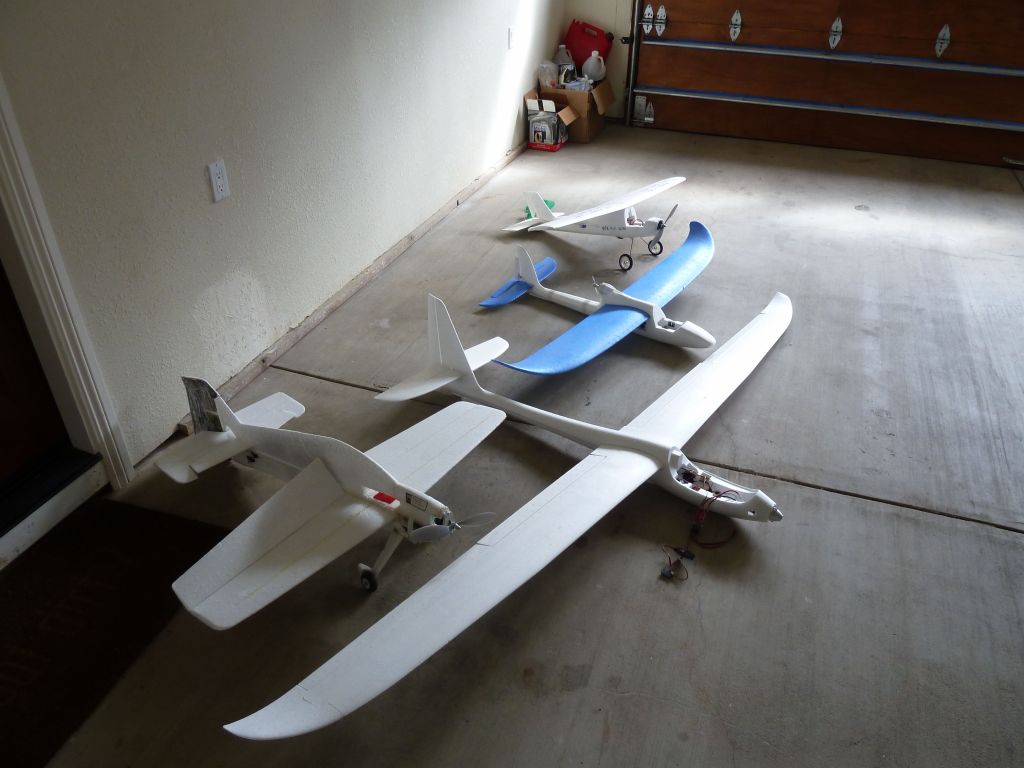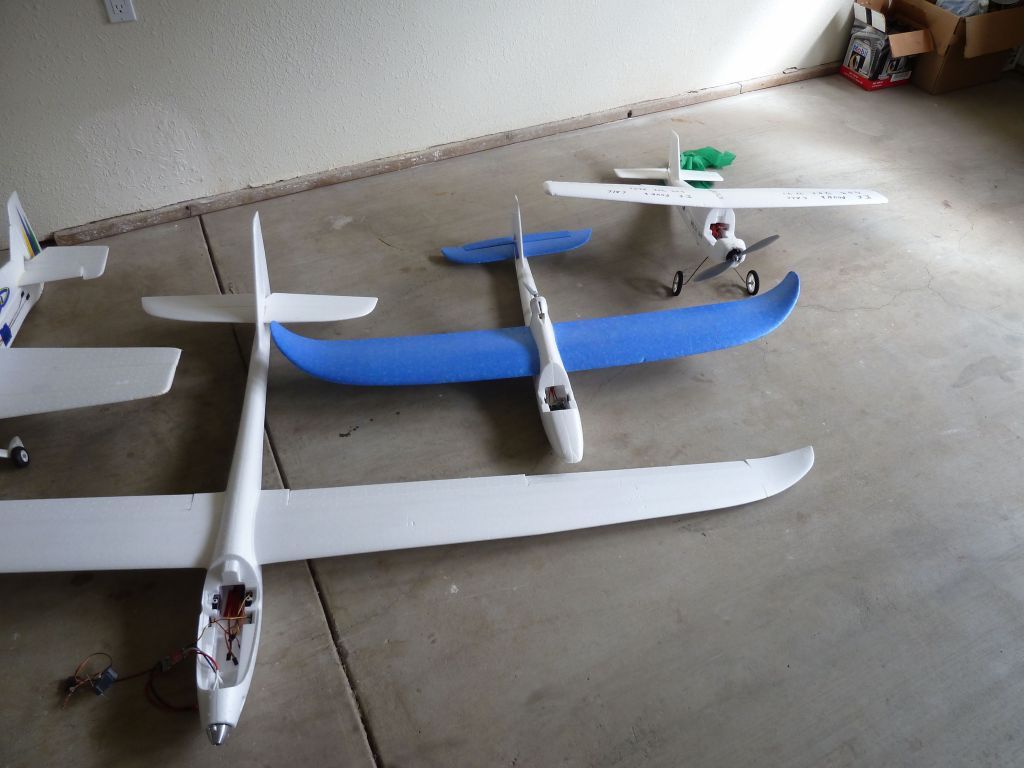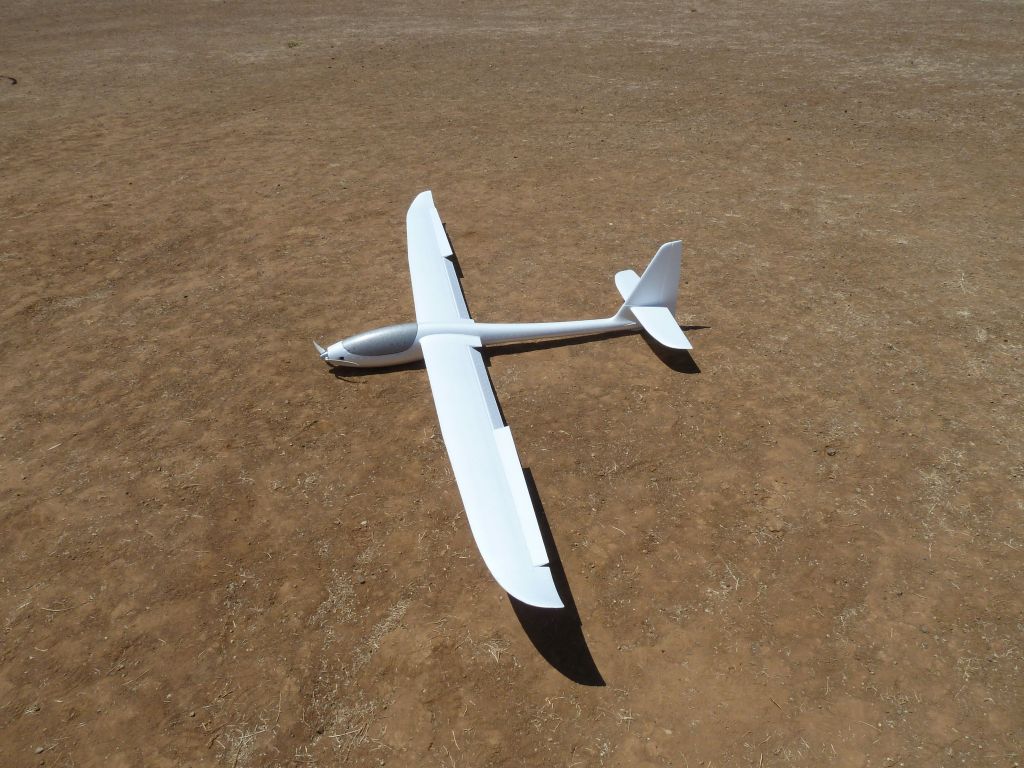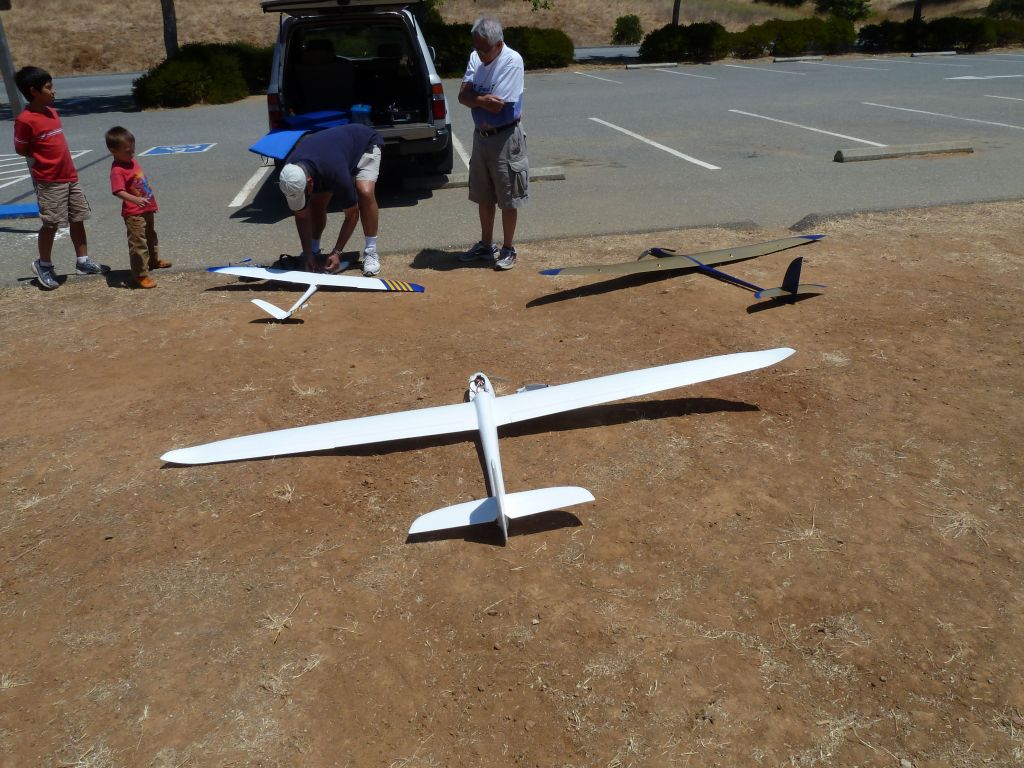Needless to say it was not a hard sell, I offered to take it over and fix it up. The tricky parts were getting a new prop without knowing what motor was inside except for the fact that it was a competition motor with enough power to blow a speed controller or a lipo if either were undersized. He told me a story of one of his gliders where the lipo caught on fire while flying and they saw the glider gliding away while on fire :)
First, the glider is huge. Its wingspan is more than 3 times the one from my old trusty minimag, and about as much as 2 of my bigger planes combined:
The other tricky bit was setting up a radio. This was actually the hardest bit because while I had had the foresight to by a more expensive Spektrum DX7 back in the day and therefore had 7 channels, the DX7 was just a pita to configure for crow/butterfly flaps assigned to the power stick like in this picture (ailerons up and flaps down):
It turns out that the mixers in the DX7 barely allow you to use the power stick to either control the motor, or the crow flaps at the flip on one switch, but it's super non obvious. I owe a big big thank you to the guy who figured it out and wrote this post:
http://www.parkflyers.org.nz/modules/newbb/viewtopic.php?post_id=4193
Not only he gives the setup, but he explains what the DX7 manual doesn't do: how the hell this all works. This in turn allowed me to improve on his programming and have just a single switch that goes from normal airplane mode to crow flaps and back.
The last piece was figuring out if the ESC's BEC was able the power the 6 servos (in theory, 2A is only good for 4). An amp meter on the battery while moving all the servos seemed to show that things were ok on that front. The only part I just didn't know about was how many amps the motor would try to get from the battery and how far I was from the 15-20C (about 40A for a 2100mAh lipo) I would be.
After a long time programming the radio, I finally convinced myself that the plane would fly, I just wasn't sure about the motor situation... It turned out that if I went past half throttle, the ESC shut down to protect itself and the battery, so launching with power was quite an interesting task, I had to put just enough power but not too much and throw just right or I would crash.
I did crash a few times after some not good enough throws, but eventually got the sucker to fly. I got the hang of it very quickly and I saw right away how it must be nearly impossible to land without the crow flap setup: even with it, I stayed over the ground in ground effect without actually landing for quite a while.
I tweaked my programming after a few flights and was able to get a little bit of uplift and glide at Rancho San Antonio.
I've ordered some bigger batteries that should give me more power and hopefully let me run the motor without it shutting down when I actually need it :) and I'm looking at ways I could put my gopro camera on the glider once I feel that I have enough power to take off without risks (unfortunately, I can't put the camera under the glider since the glider lands on its belly, which would damage the camera on landing).
It was a fair amount of time to setup (and I didn't have to build the whole glider), but it's been fun so far. Now I have to get the hang of how high I am and whether I could safely land back without power if I had to.
Fellow glider pilot at Rancho San Antonio:



